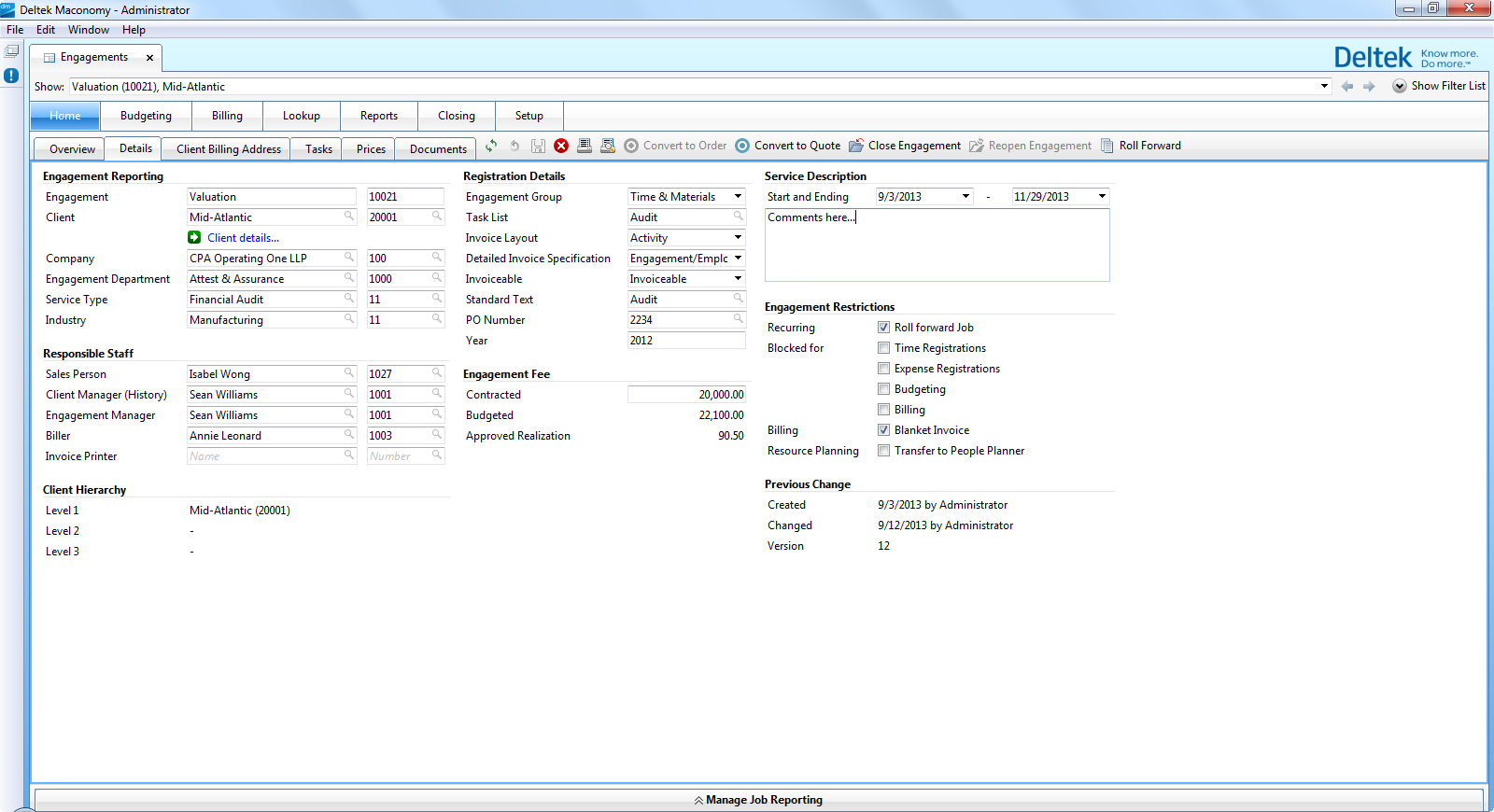Engagement Information
With several hundred fields available and all of the key information preconfigured, the CPA solution stores a host of engagement-related information that is relevant for managing the services that your firm provides to your clients.
The following is a summary of the key attributes that are captured on each engagement:
- Key Stats: The solution captures a lot of information; however, certain information is more important than other information. The “key” statistical information that is used for reporting is a great example. The solution stores statistics such as the Legal Entity, Engagement Department, Service Type, and Industry on the engagement and supports full P&L reporting.
- Roles: You can capture up to ten definable roles on an engagement. The CPA solution defines several for you out-of-the-box to support key workflows for billing and other activities such as approving employee expenses that are related to the engagement. These include Sales Person (if using Maconomy CRM), Client Manager (derived from the client card when the engagement is created), Engagement Manager, Biller, and Invoice Printer (derived from the client card). The roles are critical to push relevant notifications to the user who is responsible for taking workflow actions that are related to activities that occur on the engagement. This is one of the mechanisms that enable engagement “control” within the CPA solution.
- Registration Details: The CPA solution offers a number of preconfigured ways to manage engagements out-of-the-box. You can operate Time & Materials, Fixed-Price, and Internal engagements. You can have multiple revenue recognition treatments, although the most common for CPA firms is WIP Evaluation, either at the detailed client/engagement/task level or at the G/L level. The entry details also enable you to define how to create an invoice for an engagement (that is, what the invoice should look like). Finally, standard text codes, PO numbers, and Engagement Year are also available.
- Engagement Fees: When entering into a service agreement with your client, you likely have an engagement letter or a statement of work. The CPA solution offers you a field that is designed specifically for this value. In addition, the solution compares this value against the Budget value for fees and automatically calculates your Budgeted Realization. This is a critical metric in managing your engagement, and it is critical information for deciding what WIP to bill/write off in the billing process.
- Engagement Restrictions: The solution provides a number of engagement restrictions, most notably if the engagement is “recurring.” Recurring indicates the desire to roll forward the engagement to next year, which is quite common in CPA practice. You can also manage time, expenses, budget, and invoicing, and even block/hold an engagement while using these restrictions.
- Task Lists: The CPA solution offers a task list per engagement, which is commonly derived from the engagement template during creation. The task list (or work codes) identifies the individual tasks to be completed on the engagement (for example, Tax Preparation for a Personal Tax engagement). The solution uses tasks to manage the engagement and identify budget-to-actual variances where actual time is compared against what has been budgeted. It is also helpful in the planning phase (see the “Add-on” section Deltek People Planner (RM) for details about People Planner).
- Pricing: The majority of CPA firms use standard prices per employee category (for example, staff level, such as Associate) or individually named employee. You can also make engagement-specific price decisions, rather than assume the same pricing model across all billable work.
- Documents: You can store documents on each engagement, such as the engagement letter or statement of work for the services to be provided.

Parent Topic: Engagement Management